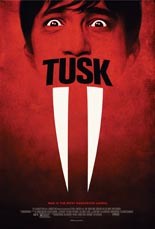
 Antoine Fuqua’s The Equalizer bears only nominal resemblance to the 1980s television series of the same name, in which British thesp Edward Woodward spent four seasons on CBS prime time as force of vengeance-for-hire Robert McCall. The big-budget actioner casts decidedly non-British Denzel Washington in the same role, yet more accurately could be titled Denzel Does Damage. Not for nothing does Fuqua frame his Training Day star strutting his stuff toward the camera as an explosion mushrooms from behind in slow motion.
Antoine Fuqua’s The Equalizer bears only nominal resemblance to the 1980s television series of the same name, in which British thesp Edward Woodward spent four seasons on CBS prime time as force of vengeance-for-hire Robert McCall. The big-budget actioner casts decidedly non-British Denzel Washington in the same role, yet more accurately could be titled Denzel Does Damage. Not for nothing does Fuqua frame his Training Day star strutting his stuff toward the camera as an explosion mushrooms from behind in slow motion.
Secretly a former intelligence agent, the widowed McCall now lives a lonely life of routine as a minimum-wage worker at a home-improvement chain. When not hauling lumber, he can be found sipping tea and reading Great American Novels at a greasy-spoon diner. It is there he gets drawn back into the world of bam-bang-boom when he comes to the defense of his friendly neighborhood teen prostitute (Chloë Grace Moretz, 2013’s Carrie), thereby stepping in the pile of doo-doo that is the Russian mafia.
 Have no fear, for Fuqua allows McCall to do that Robert Downey Jr.’s Sherlock Holmes thing where he stylistically surveys the room and figures out all the shit that’s about to go down before it goes down. McCall does one better than Holmes by estimating how many seconds each ass-kicking will take. The Equalizer is also The Timekeeper.
Have no fear, for Fuqua allows McCall to do that Robert Downey Jr.’s Sherlock Holmes thing where he stylistically surveys the room and figures out all the shit that’s about to go down before it goes down. McCall does one better than Holmes by estimating how many seconds each ass-kicking will take. The Equalizer is also The Timekeeper.
It all coalesces in an after-hours showdown inside the Home Depot stand-in, where McCall employs various tools from the shelves to booby-trap the big-box store with gory results. While clearly the film’s showstopper sequence, it doesn’t compare to the highly similar, hardware-enabled plan of revenge exacted by Kim Basinger in 2008’s While She Was Out. Of course, that sleeper didn’t have white-hot star power at its center; the cucumber-cool Washington plays badass so well, he’s the reason you’ll forgive the corny subplots and other ludicrous touches. —Rod Lott




 To the surprise of no well-versed viewer of horror,
To the surprise of no well-versed viewer of horror, 

 After delivering a few sharp efforts right out of the gate, writer/director Kevin Smith became as lax, predictable and increasingly off-putting as those hockey jerseys he wears like a uniform. For more than a decade, the bar for his movies has been set awfully low, yet along comes the bonkers
After delivering a few sharp efforts right out of the gate, writer/director Kevin Smith became as lax, predictable and increasingly off-putting as those hockey jerseys he wears like a uniform. For more than a decade, the bar for his movies has been set awfully low, yet along comes the bonkers 
